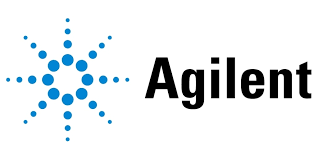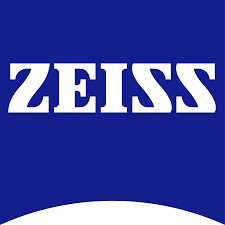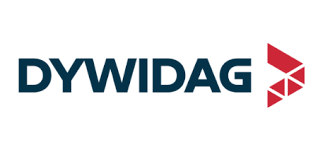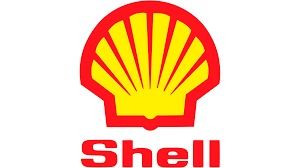Feed Binders Market Report
Published Date: 28 October 2025 | Report Code: feed-binders
Feed Binders Market Size, Share, Industry Trends and Forecast to 2033
This market report offers a comprehensive analysis of the Feed Binders industry, including market size forecasts, growth trends, and competitive insights from 2023 to 2033, targeting key stakeholders and market participants.
| Metric | Value |
|---|---|
| Study Period | 2023 - 2033 |
| 2023 Market Size | $2.50 Billion |
| CAGR (2023-2033) | 4.5% |
| 2033 Market Size | $3.92 Billion |
| Top Companies | Cargill, Inc., BASF SE, DuPont, ADM Animal Nutrition, Kemin Industries, Inc. |
| Last Modified Date | 28 October 2025 |
Feed Binders Market Overview
Customize Feed Binders Market Report market research report
- ✔ Get in-depth analysis of Feed Binders market size, growth, and forecasts.
- ✔ Understand Feed Binders's regional dynamics and industry-specific trends.
- ✔ Identify potential applications, end-user demand, and growth segments in Feed Binders
What is the Market Size & CAGR of Feed Binders market in 2023?
Feed Binders Industry Analysis
Feed Binders Market Segmentation and Scope
Tell us your focus area and get a customized research report.
Feed Binders Market Analysis Report by Region
Europe Feed Binders Market Report:
In Europe, the Feed Binders market is valued at $0.93 billion in 2023, with projections reaching $1.45 billion by 2033. The region is experiencing a shift towards organic and sustainable farming practices, boosting the demand for natural feed binders. Stringent regulations regarding animal health and welfare further support market growth.Asia Pacific Feed Binders Market Report:
The Asia Pacific region, valued at $0.41 billion in 2023, is projected to grow to $0.64 billion by 2033. This region benefits from a significant livestock population and increasing feed consumption, with countries like China and India leading the growth. Rising disposable incomes and changing dietary habits further drive demand for poultry and aquaculture products, boosting the feed binders market.North America Feed Binders Market Report:
North America has a market size of $0.82 billion in 2023, projected to expand to $1.29 billion by 2033. The region's advanced agricultural practices, coupled with a strong emphasis on feed safety and quality, ensure robust demand for innovative feed binders. The presence of well-established companies strengthens North America's competitive landscape.South America Feed Binders Market Report:
South America holds a market value of $0.15 billion in 2023, expected to reach $0.23 billion by 2033. The region's developing agricultural practices and focus on enhancing livestock productivity through improved feed quality contribute to steady growth. Additionally, Brazil, as a major exporter of meat, drives the need for efficient feed solutions.Middle East & Africa Feed Binders Market Report:
The Middle East and Africa region is valued at $0.20 billion in 2023, with expectations of growing to $0.31 billion by 2033. Increasing awareness of animal nutrition and a growing poultry industry contribute to market expansion. However, challenges such as political instability in certain areas may influence overall growth prospects.Tell us your focus area and get a customized research report.
Feed Binders Market Analysis By Feed Type
Global Feed Binders Market, By Feed Type Market Analysis (2024 - 2033)
Poultry feed dominates the market with a share of 51.57% in 2023, valued at $1.29 billion and expected to reach $2.02 billion by 2033. Feed manufacturers constitute the majority share of the market at 62.52% and are leading the application of binders. Animal nutrition, primarily targeting livestock, commands a significant part of the market, with an emphasis on multi-species formulations.
Feed Binders Market Analysis By Application
Global Feed Binders Market, By Application Market Analysis (2024 - 2033)
The Animal Nutrition application is projected to maintain a strong market presence, representing a size of $1.56 billion in 2023 and anticipated to grow to $2.45 billion by 2033. Other applications, including pet foods, currently valued at $0.51 billion, are also poised for growth due to increasing pet ownership.
Feed Binders Market Analysis By Binder Type
Global Feed Binders Market, By Binder Type Market Analysis (2024 - 2033)
Natural binders dominate the market, holding an 82.05% share with a size of $2.05 billion in 2023, expected to rise to $3.21 billion by 2033. In contrast, synthetic binders contribute a smaller share at 17.95%, valued at $0.45 billion in 2023, but are also projected for steady growth.
Feed Binders Market Analysis By End User
Global Feed Binders Market, By End-User Market Analysis (2024 - 2033)
Feed manufacturers are the primary end-users, with an overwhelming size of $1.56 billion in 2023. Livestock farmers and pet food manufacturers are also key players, contributing to the overall demand and utilization of feed binders in various formulations.
Feed Binders Market Trends and Future Forecast
Tell us your focus area and get a customized research report.
Global Market Leaders and Top Companies in Feed Binders Industry
Cargill, Inc.:
A leading global provider of food, agriculture, financial, and industrial products and services offering innovative feed binder solutions.BASF SE:
Known for its advanced chemical solutions, BASF develops high-performance binders that enhance feed efficiency and animal health.DuPont:
A major player in animal nutrition, DuPont offers a range of ingredients including effective feed binders to improve feed quality.ADM Animal Nutrition:
A subsidiary of Archer Daniels Midland Company that specializes in nutritional solutions for livestock, including various feed binder products.Kemin Industries, Inc.:
Provides innovative nutritional solutions and feed additives, including binders that improve the quality and efficiency of livestock feed.We're grateful to work with incredible clients.









FAQs
What is the market size of feed Binders?
The feed-binders market is valued at approximately $2.5 billion in 2023 with a projected growth rate of 4.5% CAGR. By 2033, the market is anticipated to expand significantly, driven by increased demand across various segments.
What are the key market players or companies in the feed Binders industry?
Key players in the feed-binders industry include major companies involved in the production of animal feed and related products. These companies specialize in offering innovative variants of feed binders designed to enhance feed quality and efficiency.
What are the primary factors driving the growth in the feed Binders industry?
The growth in the feed-binders market is primarily driven by increasing livestock production, growing demand for high-quality animal feed, and advancements in feed formulation techniques, which necessitate effective binding agents to enhance feed nutrition.
Which region is the fastest Growing in the feed Binders market?
The Asia Pacific region is projected to experience rapid growth in the feed-binders market, with an increase from $0.41 billion in 2023 to $0.64 billion by 2033, making it a significant area of expansion in the coming years.
Does ConsaInsights provide customized market report data for the feed Binders industry?
Yes, ConsaInsights offers customized market report data tailored to meet specific needs in the feed-binders industry, allowing clients to gain insights that align with their strategic goals and operational requirements.
What deliverables can I expect from this feed Binders market research project?
Clients can expect comprehensive deliverables including detailed market analysis, segmentation reports, trend assessments, competitive landscape evaluations, and strategic insights tailored to the feed-binders industry.
What are the market trends of feed Binders?
Current trends in the feed-binders market include increased adoption of natural binders, a focus on sustainability, advancements in binders technology, and growing awareness of animal nutrition, shaping future market dynamics.

